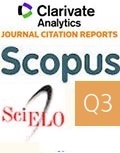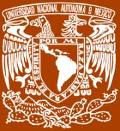Contribución al conocimiento geológico del Mesozoico en la parte Norte del Terreno Tahué, México
Contribution to the geological knowledge of the Mesozoic in the northern part of the Tahué terrane, Mexico
Samuel Eguiluz y de Antuñano1,*
1 Geólogo consultor, Rinconada Precolombina, Bonampak 103, Coyoacán, C.P. 4700, CDMX.
Autor para correspondencia: (S. Eguiluz y de Antuñano) This email address is being protected from spambots. You need JavaScript enabled to view it.
Cómo citar este artículo:
Eguiluz y de Antuñano, S., 2025, Contribución al conocimiento geológico del Mesozoico en la parte Norte del Terreno Tahué, México: Boletín de la Sociedad Geológica Mexicana, 77(1), A041124. http://dx.doi.org/10.18268/BSGM2025v77n1a041124
Manuscrito recibido: 8 de Mayo, 2024; Manuscrito corregido: 4 de Noviembre, 2024; Manuscrito aceptado:8 de Noviembre, 2024
ABSTRACT
The stratigraphy of Mesozoic volcanic-sedimentary, marine, and continental rocks in the Sierra Madre Occidental is poorly documented, as most studies have focused on the younger Oligocene–Neogene volcanic cover. This study provides new data on the lithology, depositional environments, and chronology of units exposed over an area of approximately 30,000 km² in the canyons of Durango and Sinaloa, in the northern part of the Tahué Terrane. Three stratigraphic sequences are recognized, separated by major unconformities. Sequence I, assigned to the Canelas Formation, consists of carbonaceous black shale, marine sandstones, and tuffs with a thickness exceeding
200 m. Fossils such as Tmetoceras kirki, Erycitoides sp., and Bositra buchi indicate a Middle Jurassic age. This unit is characterized by significant structural shortening, suggesting a tectonic event likely related to the evolution of the continental margin. Sequence II unconformably overlies the previous unit. It begins with continental conglomerates containing detrital zircons with U-Pb ages ranging from the Proterozoic to the Jurassic, indicating a source from a complex basement. This sequence transitions into a volcanic-sedimentary succession deposited in coastal to marine environments, with microfossils dated to the Tithonian–Berriasian. Upsection, more than 1,000 m of terrigenous deposits and lava flows are overlain by a lagoonal limestone containing benthic foraminifera and mollusks, assigned to the Cosalá Formation, with an Aptian to middle Albian age. Sequence III comprises continental clastic and volcanic rocks, including microbialites, various ichnogenera, fossil wood, and palynomorphs. The youngest detrital zircon ages range from ±90 to ±87 Ma, suggesting stratigraphic continuity into the Paleogene. These units are unconformably overlain by the felsic volcanic cover of the Oligocene–Neogene Sierra Madre Occidental. The stratigraphic and geochronological evidence presented here supports the recognition of three distinct geodynamic phases during the Mesozoic evolution of the Tahué Terrane, distinguishing it from the Zihuatanejo Terrane and neighboring terrains.
Keywords: U-Pb chronostratigraphic Tahué Terrain, Mesozoic magmatism, tectonic evolution western Mexico.

